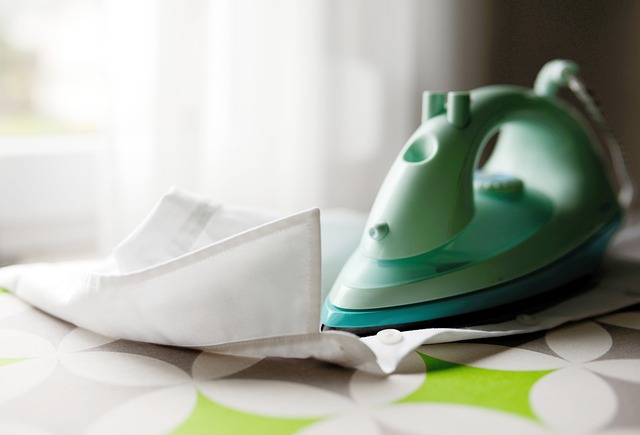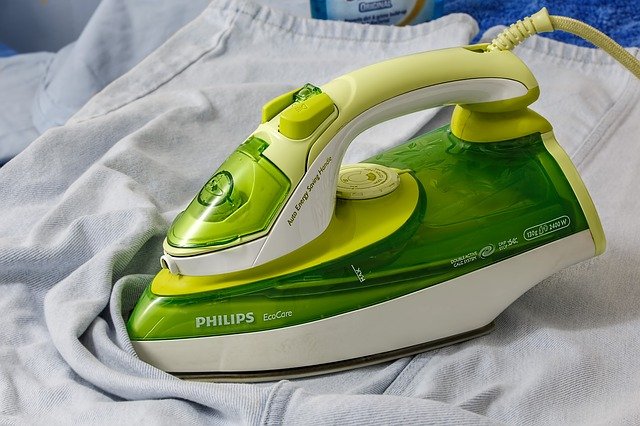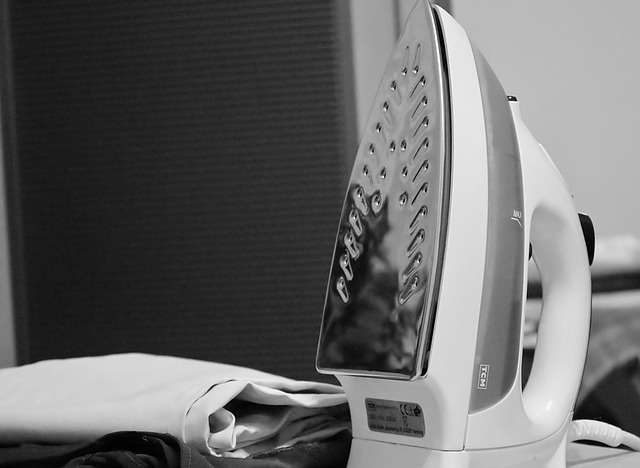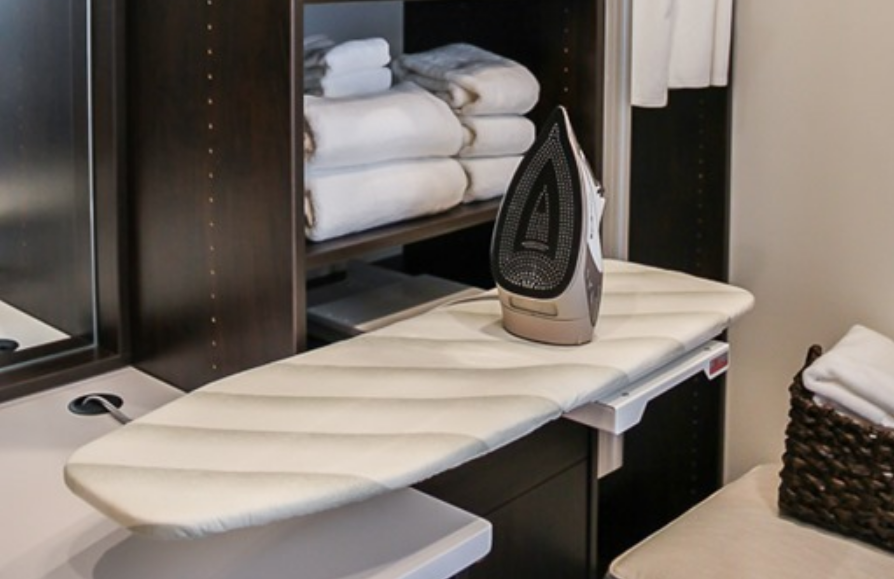How to Choose Iron Temperatures for Fabrics
How to iron silk or any other fabrics? Knowing the right ironing temperature for your fabrics can save you from lots of stress. It can save you from ruining high-quality fabrics which can make you buy a new set.
You can also get an idea of which fabrics require ironing at low, medium, or high levels of heat. A knowledge of ironing temperature levels for different fabrics will allow you to smoothen the fabric with less work when you work on a ironing board. This will help you have your fabrics in their best condition.
Understanding heat and fabric
Different fabrics have different corresponding heat levels which makes them look neater. Ironing is employed to eliminate wrinkles or curled hem edges on fabrics. Nowadays, irons are designed with precise heat levels accessible through a sliding dial.Depending on what brand or manufacturer, these sliding dials can go on up to 7 levels of heat. The 7th dial is the hottest which heats the iron up to about 200 degrees Celsius or 390 degrees Fahrenheit.
Different fabrics with different levels of heat (Lowest to Highest)
1. Acrylic fabric
One of the three fabrics with the lowest level of ironing heat is Acrylic. It goes on about 135 degrees Celsius. Experts advise against ironing Acrylic due to its susceptibility to melting. Instead, this fabric can be steamed at a cool temperature while inside out. It should also have a damp cloth between the Acrylic and iron. After steaming, gently press the iron on the fabric instead of moving it back and forth.
2. Nylon
Nylon is the second of the three with the lowest heat ironing level of 135 degrees Celsius. It tends to become more wrinkle-resistant than wrinkle-free. This is due to the fact that the complex weaves of nylon fabric keep the wrinkles out. As Nylon cannot bear too much heat, experts say that it burns easily. Fabric experts also suggest that you can iron Nylon but on the lowest level or with no heat at all.
3. Spandex or Lycra
The third of the lowest ironing heat level of 135 degrees Celsius is Spandex or Lycra. Spandex or Lycra fabric doesn’t have the ability to withstand heat. If this type of fabric comes in contact with heat higher than 135 degrees Celsius, it will weaken and break. Professionals suggest that fabrics made of Spandex or Lycra should not be ironed; however, if necessary, iron at the lowest heat level.
4. Acetate
Acetate fabric is on the second-lowest level of the heating iron. It can withstand up to about 143 degrees Celsius. Fabric experts recommend ironing Acetate at the lowest heat level to prevent melting. They also recommend using the method of steam ironing in order to produce the best and safest result. If ironing is necessary, it should be done on the wrong side of the garment.
5. Polyester
Polyester is on the third-lowest level of the ironing temperatures of fabric. It can withstand about 148 degrees Celsius. Polyester fabric is commonly employed in fashion and sports clothing due to its favorable properties. However, Polyester’s synthetic fibers can easily melt when ironed on higher levels of ironing temperature. The proper way to iron polyester clothing is by setting the iron into cool or warm mode.
6. Silk
Together with Polyester, Silk also has the same ironing temperature. Silk fabric can also withstand heat up until 148 degrees Celsius. Silk fabric will melt if the ironing temperature exceeds 148 degrees Celsius. To properly iron silk fabric, iron it on the wrong side of the garment using a low heat setting. Experts suggest that the steam ironing process can effectively address most wrinkle problems on silk.
7. Wool
Wool also shares the same ironing temperature with polyester and fiber. This also goes on without heat damage for about 148 degrees Celsius. The proper way to iron wool fabric is by setting the temperature of the iron to low. Most professionals suggest using a steam iron to obtain better ironing results. However, on a flat iron, the fabric clothing must be iron on the wrong side, must be slightly damp, and you should also use a pressing cloth.
8. Viscose or Rayon
Viscose or rayon fabric is on the fourth-lowest level of ironing temperature. It can bear about 190 degrees Celsius and not be damaged. The best way to properly iron viscose or rayon clothing is by putting a pressing cloth before ironing it. Iron the clothing when it’s damp, using a fast movement on the iron. Set the iron to the Viscose or Rayon mode, ensuring it’s below its maximum temperature.
9. Triacetate
Triacetate fifth on the lowest levels of ironing temperature. This fabric can withstand up to about 200 degrees Celsius before it melts. Professionals suggest that to properly iron triacetate fabrics, you must still use iron in a low-temperature setting. To prevent damage like melting, holes, or shiny spots, use a pressing cloth. Iron the fabric on the wrong side while it’s damp.
10. Cotton
Cotton is one of the fabrics that need higher ironing temperatures. It goes up to about 204 degrees Celsius before it can get damaged. The best way to remove wrinkles on cotton clothing is by ironing it in a damp condition. It should also be ironed inside out and must be pre-moistened with sprayed water. Experts also suggest the use of steaming or spraying processes if necessary.
11. Linen
Linen has the highest level of ironing temperature. It can withstand up to about 230 degrees Celsius before getting damaged. To properly iron linen clothing, it should be in a damp condition to be easily ironed. The iron setting must also be set too high and it must be on the wrong side of the garment. The clothing must also be sprayed to moisturize it and make the ironing process smooth.
Right steps of ironing
1) Fabric: Acrylic
Heat setting: Low (135 degrees Celsius)
- Let the acrylic fabrics in dry condition.
- Make sure to manage your heat setting and let it stay on the low level of ironing heat.
- Turn the garment inside out.
- Start ironing carefully. Steam is not advised but you may spray water if needed.
2) Fabric: Nylon
Heat setting: Low (135 degrees Celsius)
- Let the nylon fabrics in dry condition.
- Make sure to manage your heat setting and let it stay on the low level of ironing heat.
- Turn the garment inside out.
- Start ironing carefully. Steam is not advised but you may spray water if needed.
3) Fabric: Spandex or Lycra
Heat setting: Low (135 degrees Celsius)
- Let the spandex or lycra fabrics in dry condition.
- Make sure to manage your heat setting and let it stay on the lowest level of ironing heat.
- Start ironing carefully with smooth and even pressure on the fabric.
4) Fabric: Acetate
Heat setting: Low (143 degrees Celsius)
- Let the acetate fabrics in damp condition.
- Make sure to manage your heat setting and let it stay on low the level of ironing heat.
- Start ironing carefully
5) Fabric: Polyester
Heat setting: Low to medium (148 degrees Celsius)
- Let the polyester fabrics in damp condition so that they will be moist.
- Make sure to manage your heat setting and let it stay on the low to medium level of ironing heat.
- Start ironing carefully. Steam is advised if necessary.
6) Fabric: Silk
Heat setting: Low to medium (148 degrees Celsius)
- Let the silk fabrics in slightly damp condition.
- Turn the garment inside out and place a press cloth on top of the silk
- Make sure to manage your heat setting and professionals advise the users to let it stay on the low level of ironing heat.
- Start ironing carefully.
7) Fabric: Wool
Heat setting: Low to medium (148 degrees Celsius)
- Let the wool fabrics in damp condition.
- Turn the garment inside out and place a press cloth on top of the wool.
- Make sure to manage your heat setting and turn it to a wool setting or on the low to medium mode.
- Start ironing carefully and make sure that it is moist.
8) Fabric: Viscose or Rayon
Heat setting: Low to medium (190 degrees Celsius)
- Let the viscose or rayon fabrics in damp condition.
- Turn the garment inside out and place a press cloth on top of the Viscose or Rayon.
- Make sure to manage your heat setting and turn it to the lowest setting.
- Start ironing carefully. Experts advise the users to use dry iron unless otherwise indicated.
9) Fabric: Triacetate
Heat setting: Low to medium (200 degrees Celsius)
- Let the triacetate fabrics in damp condition.
- Make sure to manage your heat setting and it is advised to turn it to the lowest setting.
- Start ironing very carefully.
10) Fabric: Cotton
Heat setting: High (204 degrees Celsius)
- Let the cotton fabrics in damp condition.
- Make sure to manage your heat setting and let it on a high heat setting or cotton mode.
- Start ironing carefully. Steam and spray options are recommended.
11) Fabric: Linen
Heat setting: High (230 degrees Celsius)
- Let the cotton fabrics in damp condition.
- Turn the garment inside out.
- Make sure to manage your heat setting and let it on a high heat setting.
- Start ironing carefully. Steam and spray options are recommended.
FAQ:
1 Can I iron rayon?
Yes. You can iron rayon fabric but you should use the right temperature for Rayon clothing. The temperature must be below 190 degrees Celsius to prevent damage.
2 Can you iron silk?
Yes. You can iron silk fabric but it is prone to damage and you’d better to iron while it’s dry as it may cause water stains. The ironing temperature must be set to below 148 degrees Celsius which is low to medium level depending on the brand.
3 How to iron silk?
Silk garments must be flipped on their wrong side and ironed to a low to medium heat depending on the brand. Besides, you can iron iron silk only when it is dry, unlike other fabrics that need to be damp for better results.
Conclusion
Knowing the different ironing temperatures of different fabrics is an essential skill to prevent fabric damage. The iron temperatures can be adjusted through the sliding dials with low, medium, and high levels of heat. The lowest level of heat is 135 degrees Celsius which includes the Acrylic, Nylon, and Spandex or Lycra fabrics. On the other hand, the highest ironing temperature is 230 degrees Celsius which includes Linen fabric. To properly iron your clothing, you must know the different temperatures for different types of fabrics.




